Review: 2012 Audi A7
Large four-door cars with the style of a coupe aren’t a recent innovation. But early attempts, like the 1995 Oldsmobile Aurora, failed to captivate car buyers. It fell to Mercedes to launch the “four-door coupe” segment with the 2006 CLS. Though sales have long since dwindled to exotic car levels, back when the CLS was new about 2,000 of them left dealer lots each month. This apparently provided sufficient motivation for other manufacturers to offer their own “four-door coupes.” Volkswagen didn’t stray far from the original with its CC. Audi, on the other hand, has taken a very different approach with the new 2012 A7.
To begin with, Audi appears to have figured that, if you’re going to sweep the roofline nearly to the trailing edge of the car, you might as well make it a hatchback. The American market has rejected large upscale hatchbacks in the past—the Rover 3500, Acura-based Sterling 827, and Merkur Scorpio come to mind—but tastes have broadened in the intervening decades. The Porsche Panamera certainly has its critics, but the car’s hatchback configuration hasn’t figured highly in their critiques. And the BMW 5-Series GT? Its aesthetic shortcomings similarly extend beyond the hatch to the car’s bulky proportions.
If the Audi A7 were a stunning car, few would mind the hatch. Unfortunately, while the A7’s thoroughly tasteful exterior is far more attractive than the Porsche’s or the BMW’s, it’s a conservative design unlikely to inspire doubletakes the way the swoopier CLS did, even still does six years on. In a bid for “coupeness,” the A7’s side windows are frameless and its roofline is a couple inches lower than that of the closely related 2012 Audi A6 sedan (and nearly a half-foot lower than that of the 5-Series GT). Audi’s latest design language, with a focus on crisp horizontal lines, suits the A7’s more balanced proportions much better than it does the A8 sedan’s. A double crease along the shoulder of the car often provides the illusion of a pinstripe. The overall appearance might not inspire passion, but it exudes technical perfection. This car couldn’t be anything but German.
The Audi A7’s interior is similarly very tasteful without making a strong design statement. A line arcs from one door along the instrument panel top to the other door, but you’ll find the same in a relatively pedestrian Buick. Unlike in the first-generation CLS, nothing here seems inspired by classic Jaguars or wooden watercraft. Audi has long been known for the quality of its interiors, but the rest of the industry has been catching up. Notable in their absence: upholstered instrument and upper door panels. The seats’ stitching does not contrast, and their leather isn’t especially soft. The door pulls are, typical of Audis, hard plastic. In general the interior seems of very high quality, but not quite luxurious. The riskiest interior choice: the tested car’s ash trim is minimally finished and has a heavy grain that can actually be felt. I liked it. Others who rode in the car weren’t so sure about the matte finish. Glossy wood is available for them.
An advantage of the sensible design: though not the limo substitute the BMW GT is, there’s nearly as much passenger room inside the Audi A7 as in the related A6. So four adults fit comfortably. The front seats are moderately firm and properly supportive but less cosseting than those in some other luxury cars. They also provide minimal lateral support. Perhaps because this is an A7 and not an S7, no sport buckets or power-adjustable bolsters are offered. On the positive side of the ledger, the headrests adjust fore and aft, a rarity these days. Unlike with the first-generation CLS, contortions aren’t required to get into and out of the rear seat. One functional shortcoming: the rear bench is split by a low, integrated console, so three people cannot sit back there. For a family of five this car won’t work.
The cargo area is constrained by the car’s low tail, but it extends well forward, especially once the second row is folded. A two-piece package shelf effectively seals off the passenger area from the cargo area. It’s not nearly as heavy or overengineered as the bulkhead in the BMW 5-Series GT, but is nevertheless a little fiddly (and also reflects badly in the backlight). After removing it I was easily able to fit a bicycle with the front wheel removed (and probably would have fit it with the wheel attached if loaded in the opposite direction). Up front, the A7 isn’t as accommodating. There’s not enough room in the glove compartment or the center console for my SLR-style camera, so it rolled around the passenger footwell all week.
Some of the Audi A7’s toys impress, others not so much. The LED headlights ($1,400 if ordered a la carte) are the latest thing, but my eyes failed to detect a significant advantage over Xenons. Since they aren’t standard, the units musts be the same size and shape as a conventional headlight. Things will get more interesting when cars are designed around standard LED lights. The 1,300-watt Bang & Olufsen audio system sounds so crisp and so clear, even at high volumes, that its $5,900 price almost seems justified. My old man declared it far superior to the Mark Levinson system in his Lexus LS 460. He was less crazy about the tweeters’ acoustic lenses that remain in their somewhat obtrusive upright position even when the system is turned off. The Internet-connected nav system uses Google maps to display satellite images. A regular nav screen just doesn’t seem sufficient afterwards.
You can also search the Internet for addresses. The MMI system, with a knob, a half dozen or so buttons, and a touchpad that recognizes letters written with a fingertip, is usually easy to operate on the fly, but programming the nav system could be much easier. One ergonomic flaw that continued to confound me at the end of the week: the button to start the engine is located to the right of the shifter. The optional head-up display can include navigation information and night vision warnings (there’s a pedestrian detector), but not a tach or song titles (both of which I enjoyed having in a Buick). The display for the optional night vision system is located between the speedometer and tach, too low to be continuously viewed. The blind spot warning system seems designed to only signal if a car is overtaking you from the rear quarter. If one is parked at a steady speed in your blind spot it assumes you know it’s there. Other such systems light up in a wider range of circumstances. The adaptive cruise control works better than earlier systems; it’s even viable in stop-and-go traffic. Though the A7’s concept and design seem a natural fit for a panoramic sunroof, the roof portal is a standard-sized unit.
Currently only one engine is available in the U.S.-market Audi A7: the same 310-horsepower 3.0-liter supercharged V6 available in the redesigned 2012 A6. Officially the related mill in the Audi S4 kicks out another 23 horsepower, but the A7’s engine feels stronger than its power rating. The six’s quiet, refined character is better suited to the A7 and A6 than the smaller, sportier car. There’s no sensation of boost and no sound from the supercharger, just impressive V8-style torque (the 325 foot-pound peak runs from 2,900 to 4,500 rpm). Sixty arrives in just a bit over five seconds.
The Audi A7’s ZF eight-speed automatic shared with many other luxury cars (and soon some Chryslers) has excellent ratios for quick launches, relaxed highway cruising, and everything in between. It reacts quickly, but shifts are usually noticeable, with the occasional odd bump when braking to a stop (I noticed the same in some BMWs). Europeans get a seven-speed DSG dual-clutch automated manual instead. Did Audi judge this transmission insufficiently refined for American luxury car duty?
The 3.0T / automatic powertrain achieves excellent fuel economy for a powerful, 4,200-pound, all-wheel-drive car: the trip computer generally confirmed the 18 city / 28 highway EPA ratings. On one highway run to the airport the car managed nearly 30 mpg, about as good as my much lighter, much less powerful Mazda Protege5. In the suburbs I observed between 15 and 25, depending on the frequency of stops.
When equipped with the optional sport suspension (which lowers the car 0.4 inches) and 20-inch high-performance Yokohama tires, the Audi A7 handles about as sporty as it looks. So supremely competent, and more direct than in the typical luxury car, but short of thrilling. Steering firmness can be set to “comfort,” “dynamic,” or “auto.” The difference between the modes is noticeable. In any mode the steering gets firmer as speeds increase. You need to be travelling 70+ before it feels tight even in “dynamic.” The similar system in the larger Audi A8 feels a little firmer and tighter, if memory serves. Feedback is better in smaller Audis. The A7 feels significantly less nose-heavy than earlier Audis—perhaps because it is, with the differential positioned ahead of the transmission to enable a 54/46 weight distribution. But even with this, the AWD system’s initial 40:60 rearward torque-bias, and a braking system that intervenes to counter understeer the A7’s dynamics aren’t those of a rear-wheel-drive car. The general attitude of the chassis is one of very mild understeer. Power oversteer only happens with an aggressive throttle on loose surfaces.
With the sport suspension at least, the Audi A7’s ride is most decidedly firm, with the occasional jostle, but far from punishing. Noise is more of an issue. Though the A7’s interior certainly isn’t loud, it’s considerably louder than that of other luxury cars. The optional 20-inch tires contribute, especially on concrete; the standard treads should be less noisy. The hatchback configuration might also contribute. But the bottom line is that Audis have tended to suffer from more road noise than other luxury cars, and this remains the case with their latest.
Pricing starts at $60,125, and tops $80,000 when all the boxes are checked (the tested car lacked only heated rear seats). A 535i xDrive Grand Turismo lists for within a few hundred dollars when similarly configured—but you’ll receive a much larger discount with the slow-selling BMW. (The BMW is a quarter-ton heavier, so an argument could be made that the 550i GT is more comparable.) The redesigned 2012 Mercedes-Benz CLS550 4Matic lists for about $12,000 more. TrueDelta’s car price comparison tool indicates that nearly half of the gap can be explained by additional features on the Mercedes, including adaptive shocks, a sophisticated air suspension, various high-tech safety features, and more extensive leather upholstery. Then there’s the matter of the Benz’s much larger engine. With the Mercedes only offered with a V8 (why?), and the Audi only offered with a V6 (for now), the two avoid a direct confrontation. Probably the toughest competition for the A7: an identically-equipped A6 lists for exactly $8,000 less. Since the two cars are very closely related under the skin, this is how much you’re paying for the A7’s sleeker hatchback body.
In the end, the Audi A7 seizes the middle ground between the Mercedes-Benz CLS and the BMW 5-Series GT in both appearance and functionality. It’s more involving than those cars, but much less so than a Porsche Panamera. So buyers who highly prioritize functionality or who buy cars for almost entirely emotional reasons will end up behind the wheel of something other than the Audi. But the entire idea of a “four-door coupe” suggests a desire to have the functionality of a four-door and the styling of a coupe in the same car. The segment is all about compromise. Those seeking an intelligent “both brained” compromise between the excesses of these other cars will find it here.
Audi provided the vehicle, insurance and one tank of gas for this review.
Michael Karesh operates TrueDelta, an online source of automotive reliability and pricing data.
Michael Karesh lives in West Bloomfield, Michigan, with his wife and three children. In 2003 he received a Ph.D. from the University of Chicago. While in Chicago he worked at the National Opinion Research Center, a leader in the field of survey research. For his doctoral thesis, he spent a year-and-a-half inside an automaker studying how and how well it understood consumers when developing new products. While pursuing the degree he taught consumer behavior and product development at Oakland University. Since 1999, he has contributed auto reviews to Epinions, where he is currently one of two people in charge of the autos section. Since earning the degree he has continued to care for his children (school, gymnastics, tae-kwan-do...) and write reviews for Epinions and, more recently, The Truth About Cars while developing TrueDelta, a vehicle reliability and price comparison site.
More by Michael Karesh
Latest Car Reviews
Read moreLatest Product Reviews
Read moreRecent Comments
- Wjtinfwb My comment about "missing the mark" was directed at, of the mentioned cars, none created huge demand or excitement once they were introduced. All three had some cool aspects; Thunderbird was pretty good exterior, let down by the Lincoln LS dash and the fairly weak 3.9L V8 at launch. The Prowler was super cool and unique, only the little nerf bumpers spoiled the exterior and of course the V6 was a huge letdown. SSR had the beans, but in my opinion was spoiled by the tonneau cover over the bed. Remove the cover, finish the bed with some teak or walnut and I think it could have been more appealing. All three were targeting a very small market (expensive 2-seaters without a prestige badge) which probably contributed. The PT Cruiser succeeded in this space by being both more practical and cheap. Of the three, I'd still like to have a Thunderbird in my garage in a classic color like the silver/green metallic offered in the later years.
- D Screw Tesla. There are millions of affordable EVs already in use and widely available. Commonly seen in Peachtree City, GA, and The Villages, FL, they are cheap, convenient, and fun. We just need more municipalities to accept them. If they'll allow AVs on the road, why not golf cars?
- ChristianWimmer Best-looking current BMW in my opinion.
- Analoggrotto Looks like a cheap Hyundai.
- Honda1 It really does not matter. The way bidenomics is going nobody will be able to afford shyt.





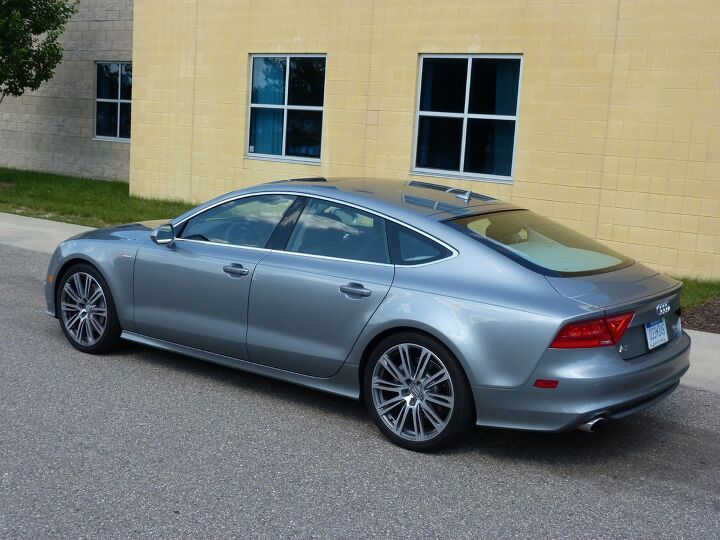







































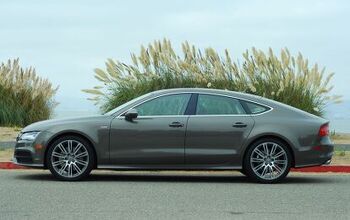

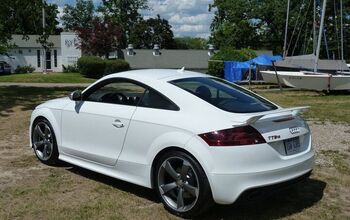
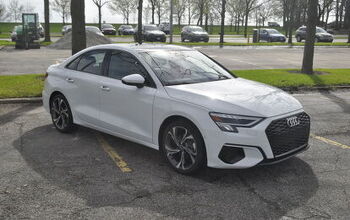
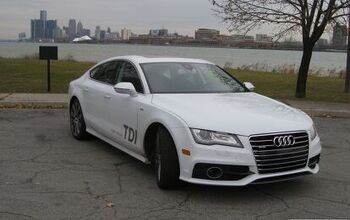










Comments
Join the conversation
Saw one today. Stunning, except they blew the back end.
The Blindspot Flashing does occur when clicker engaged and vehicle is at same speed as your vehicle. Author Michael Karesh had misinformation about how function works.